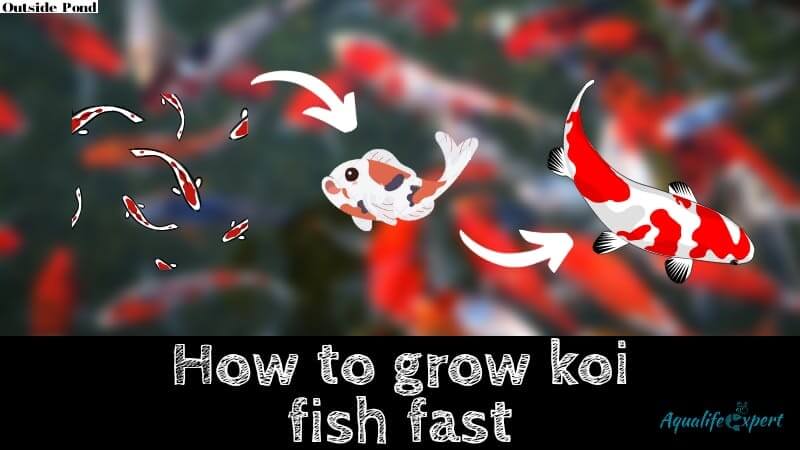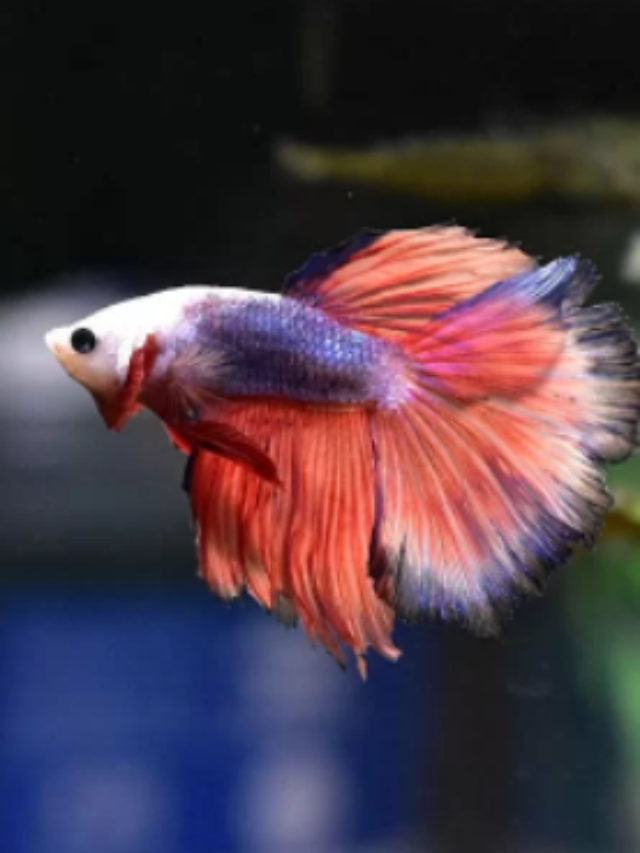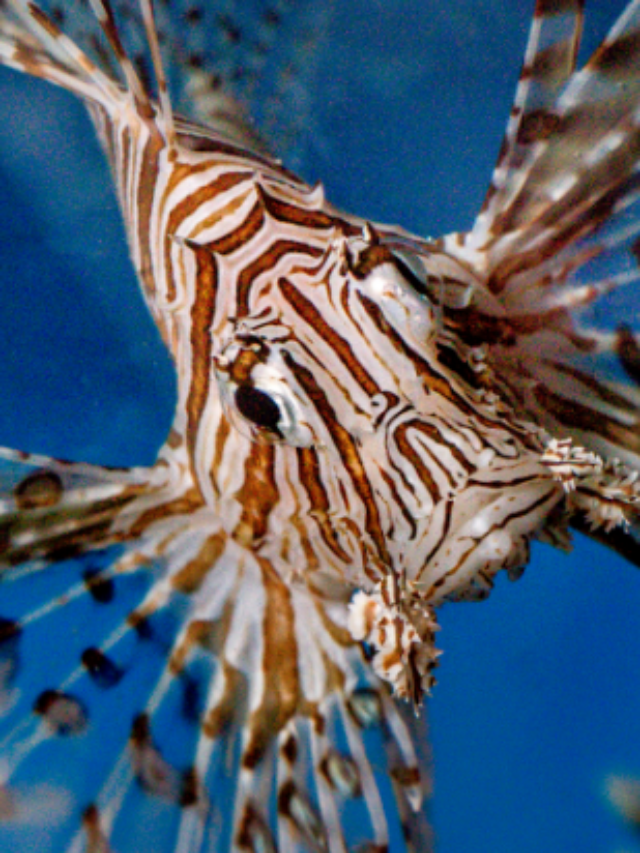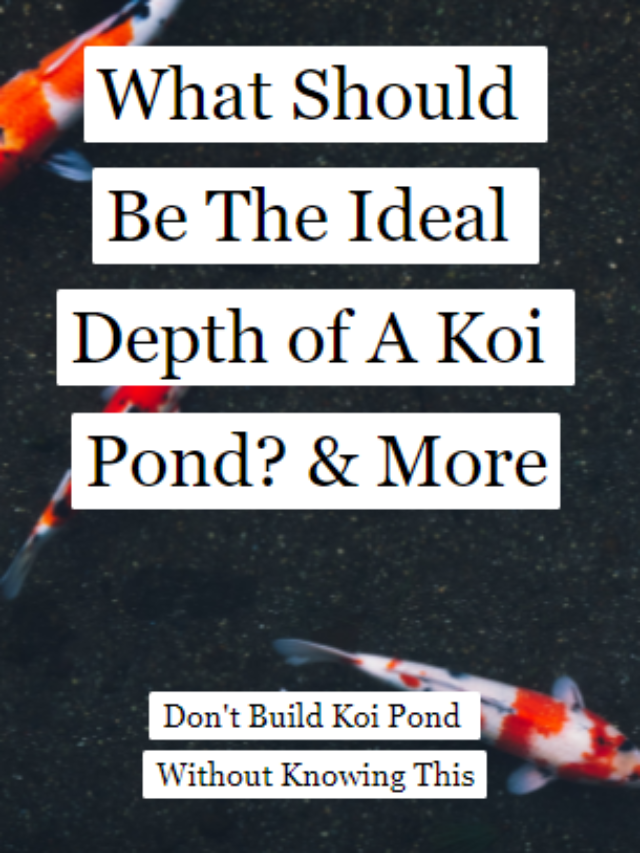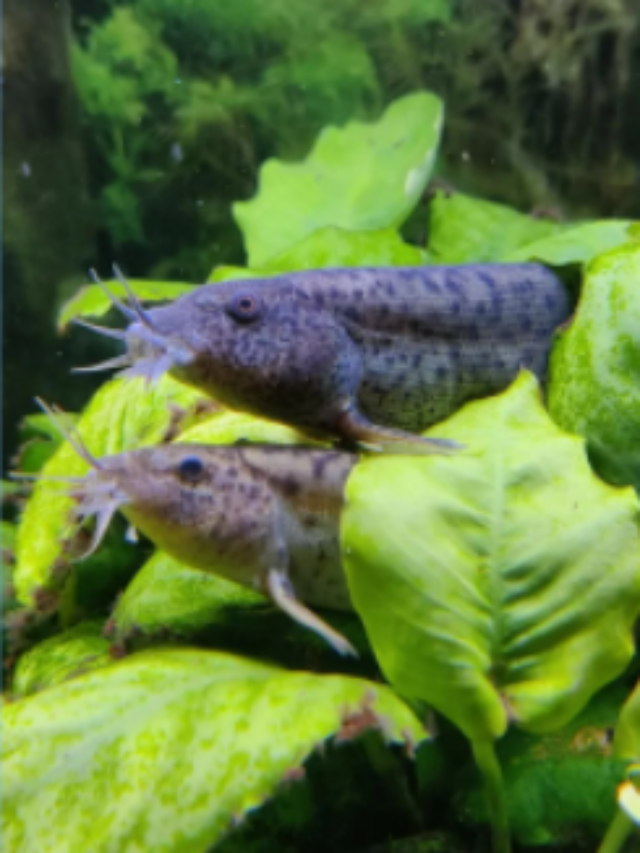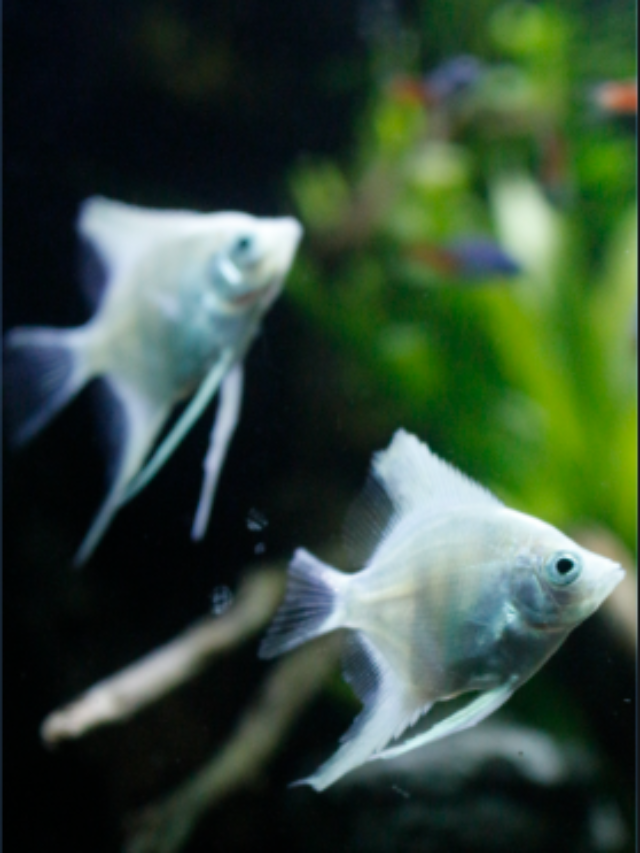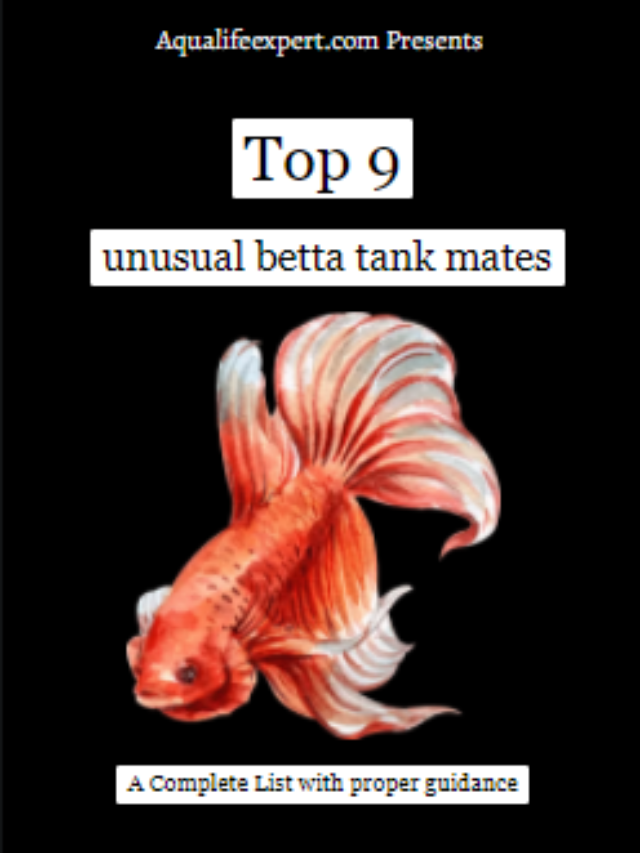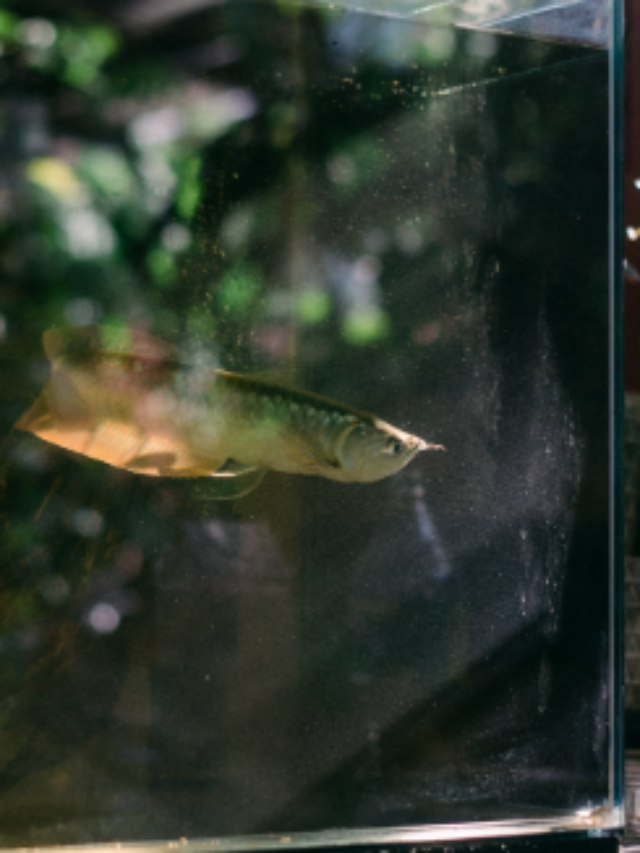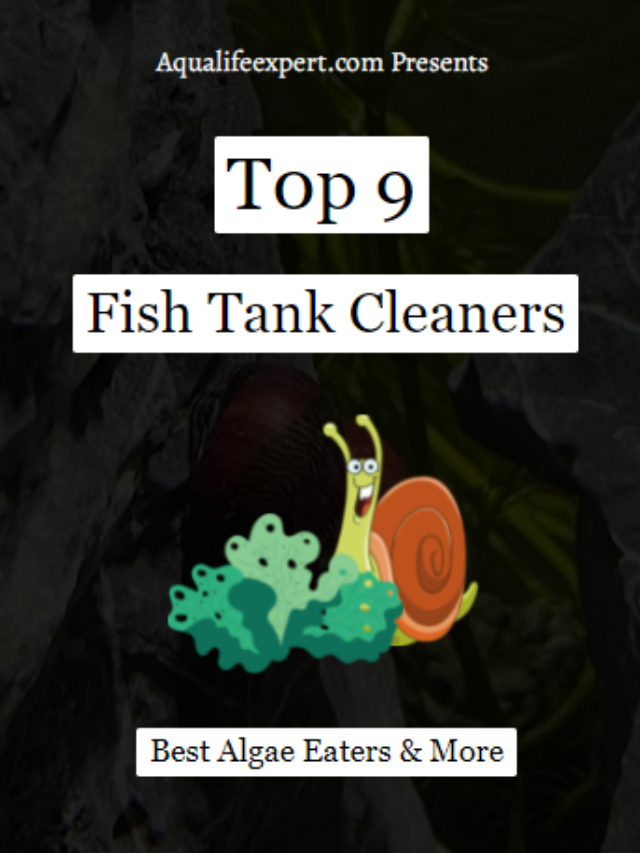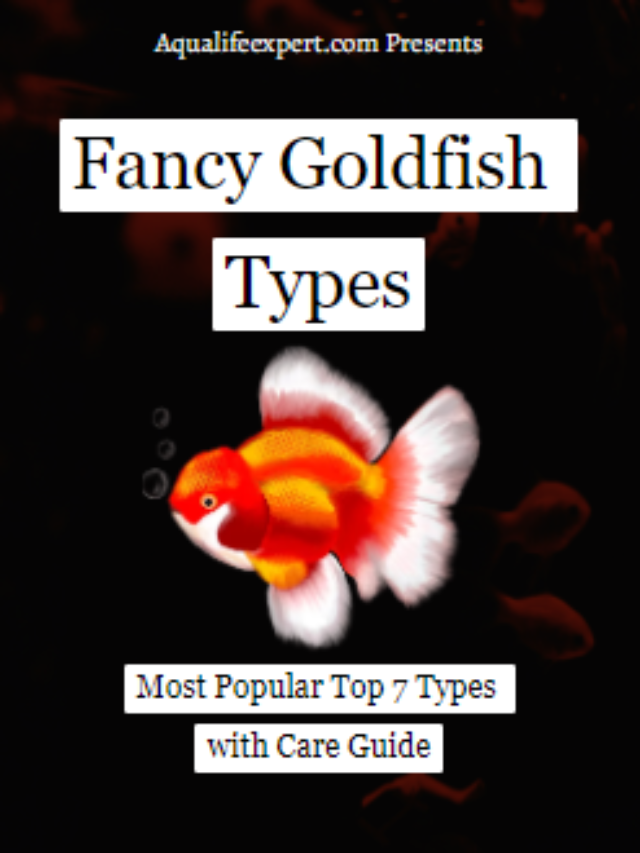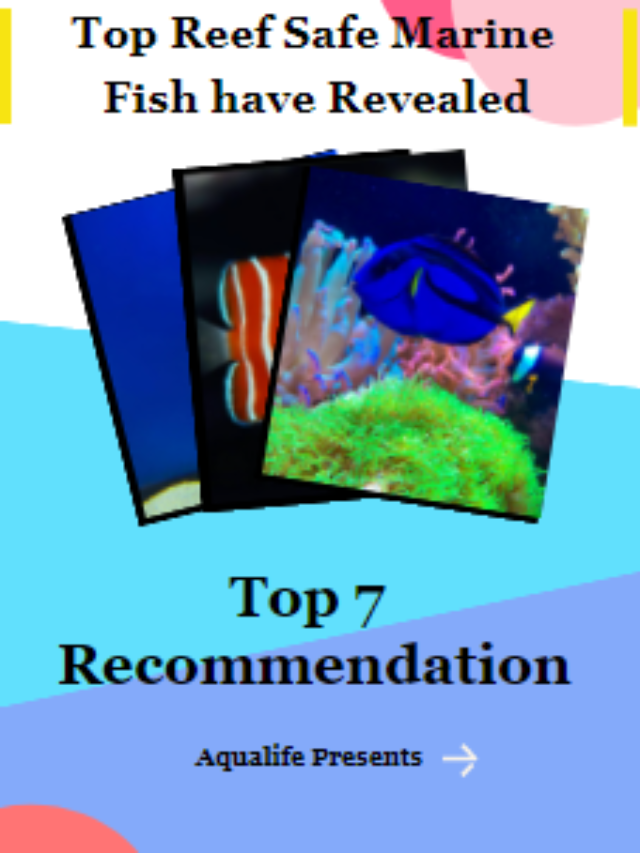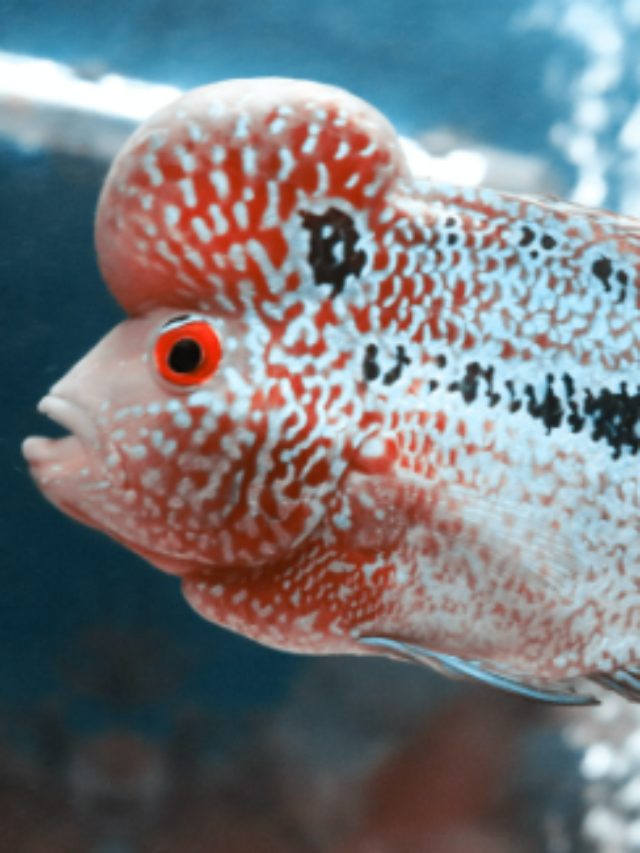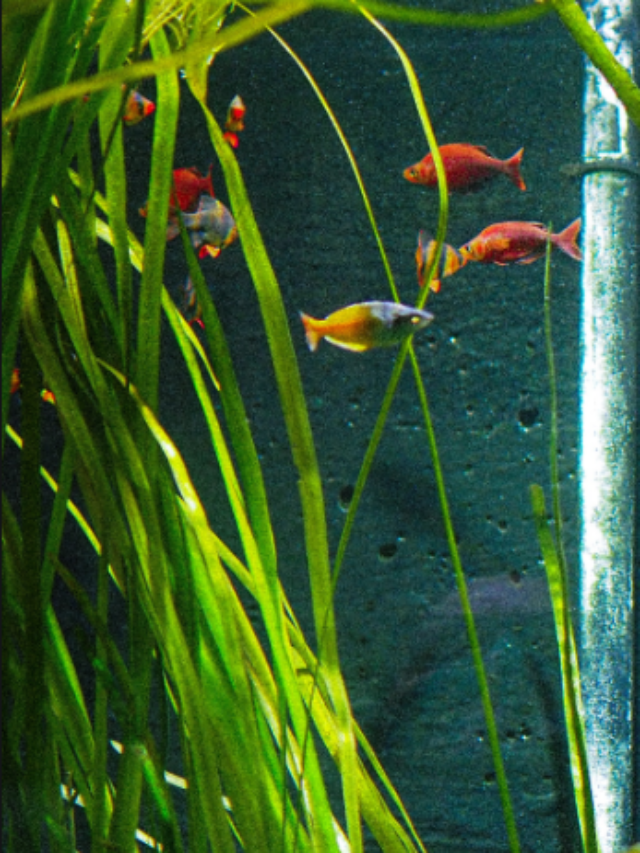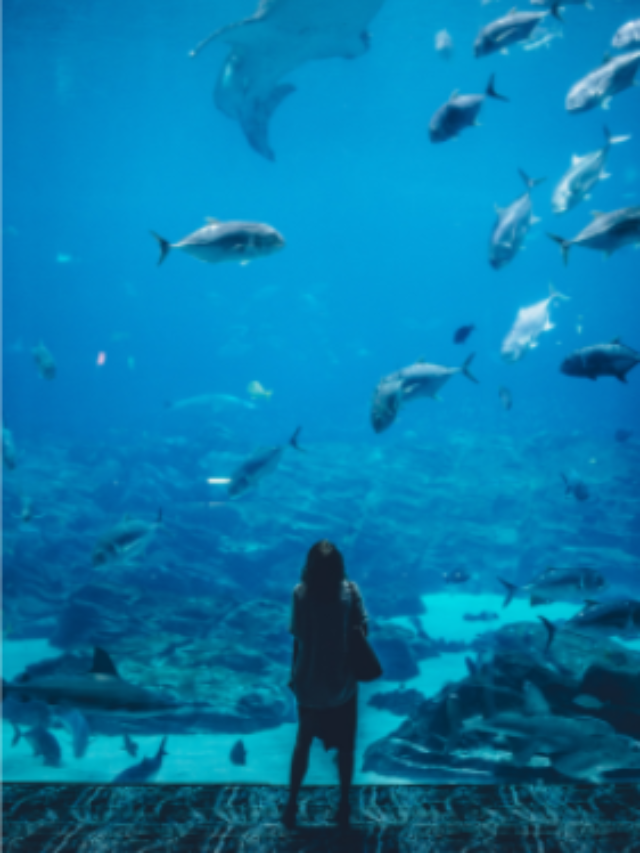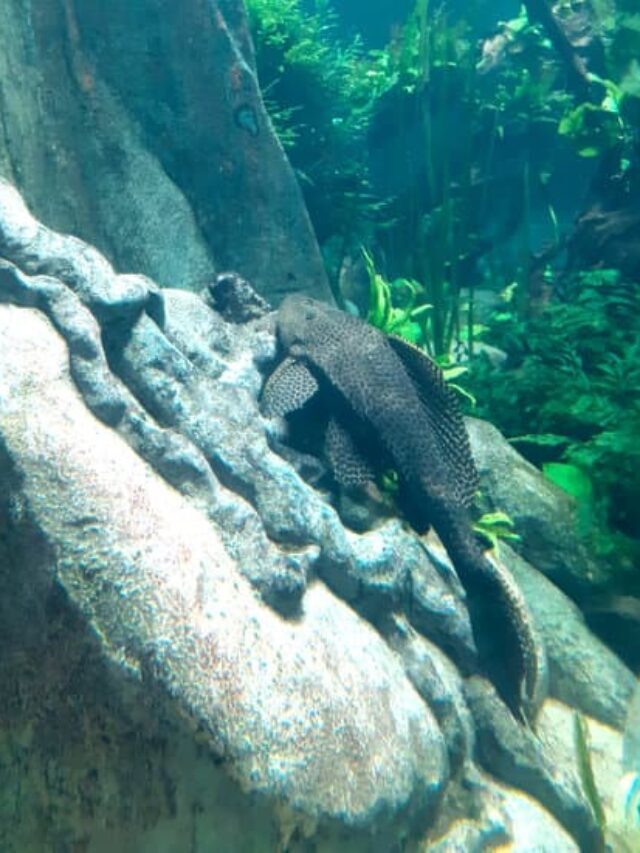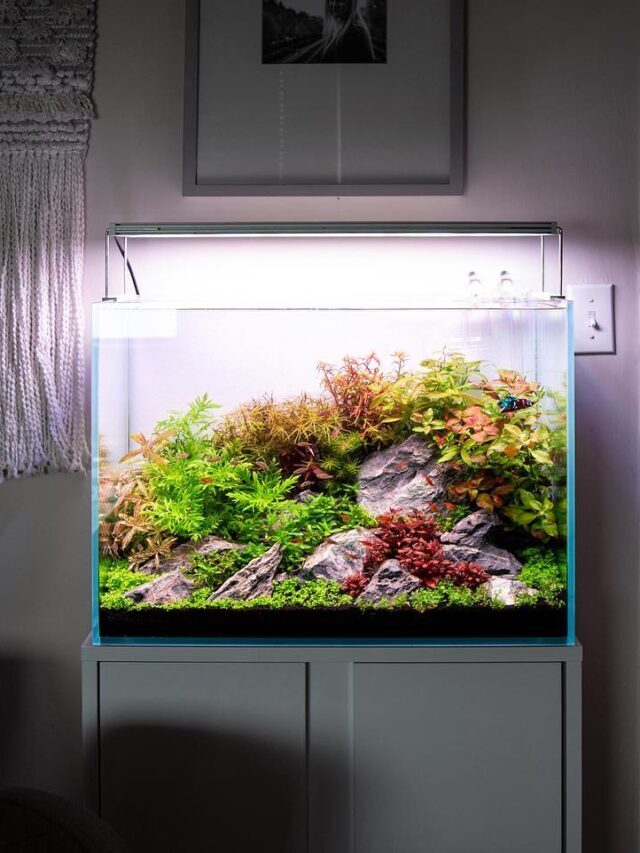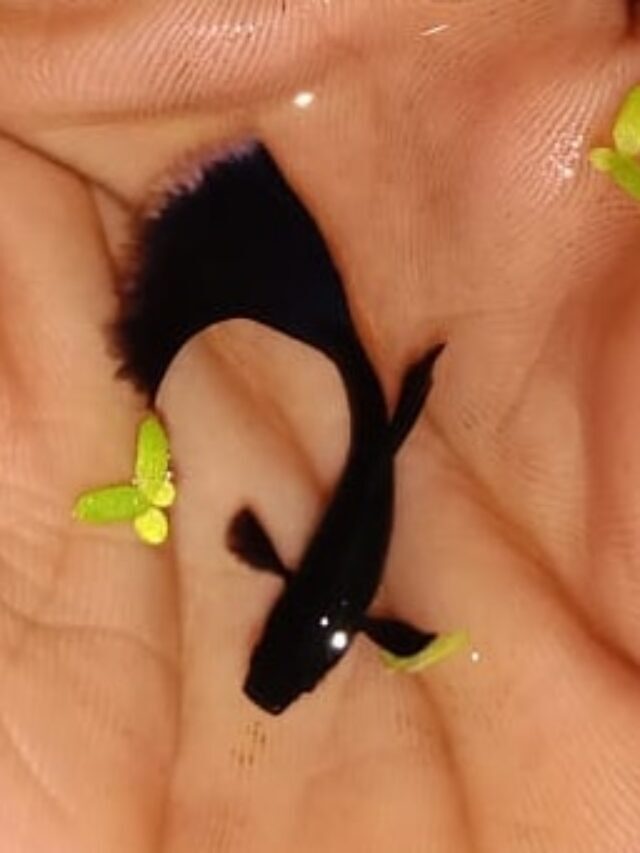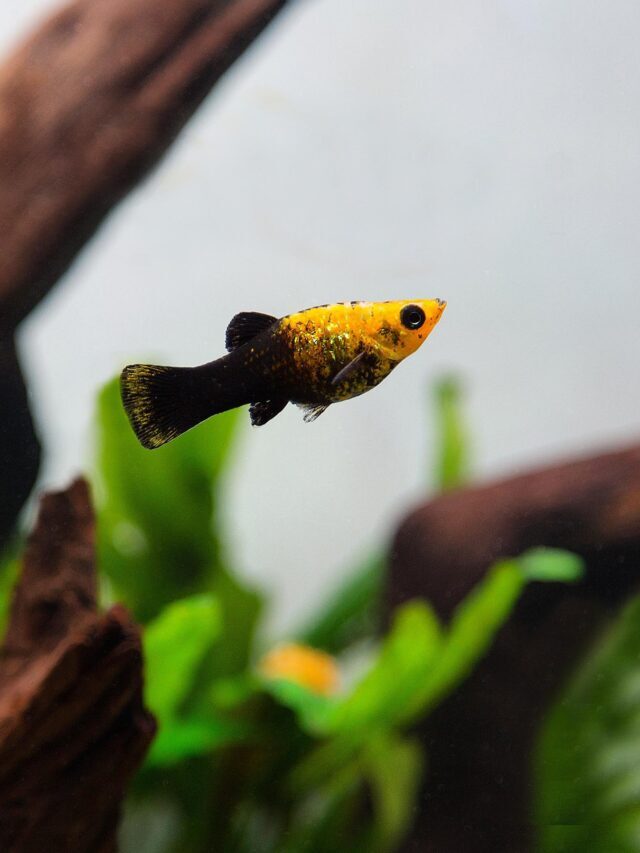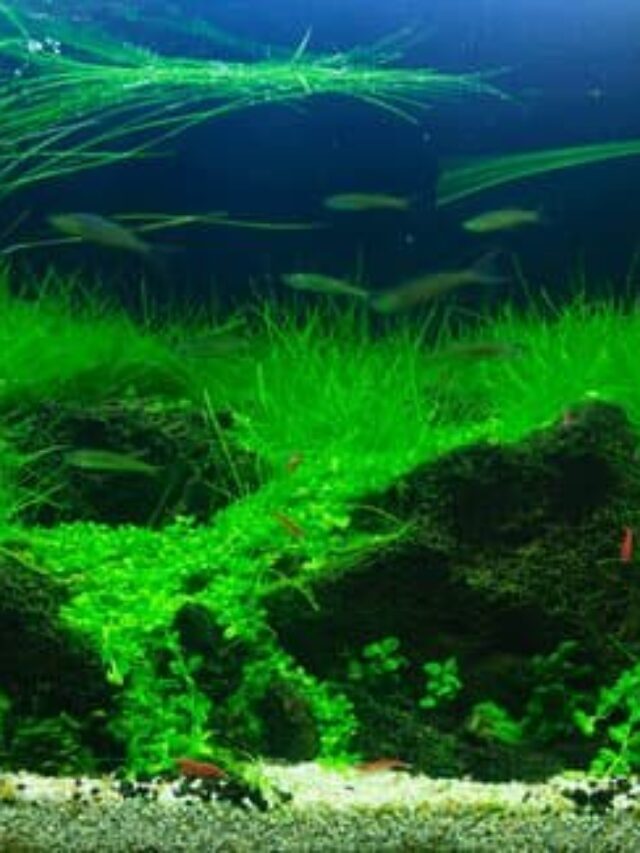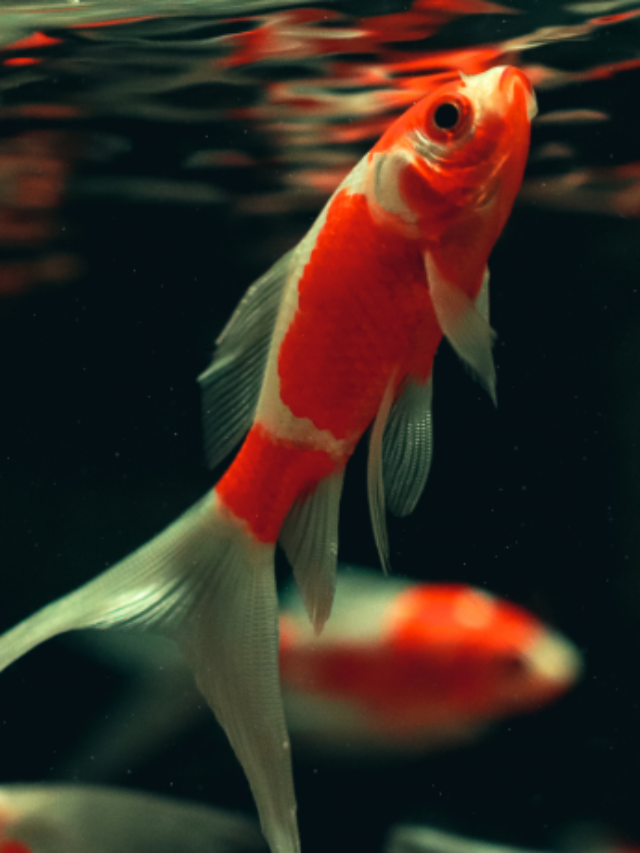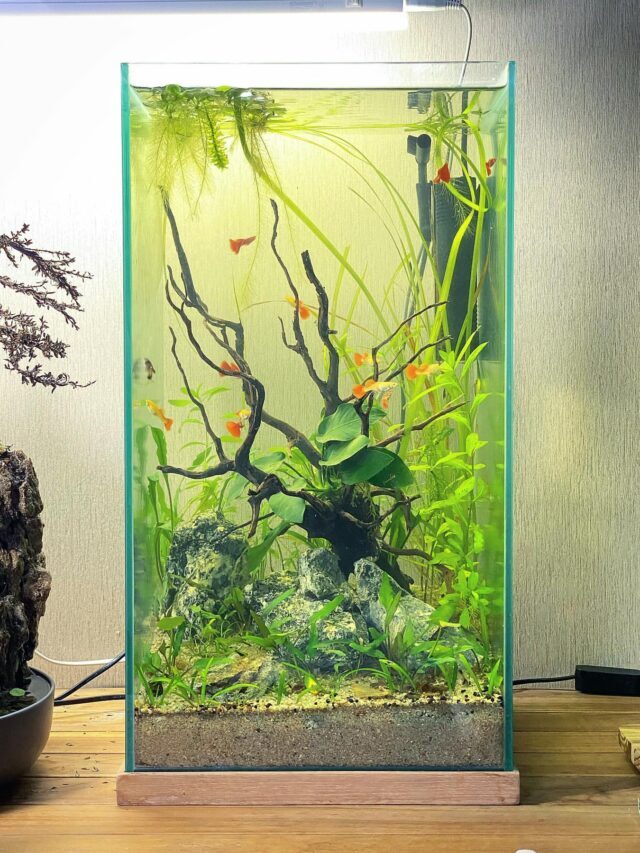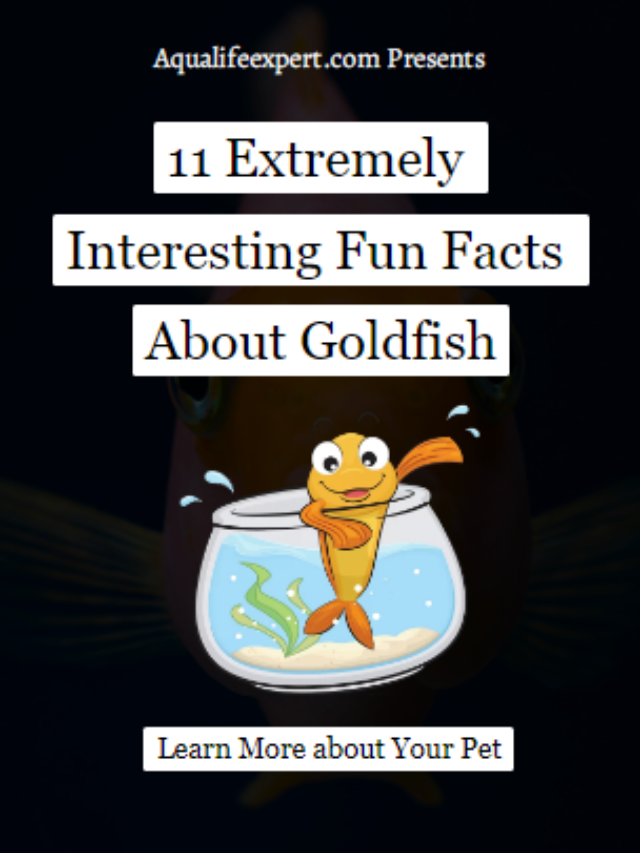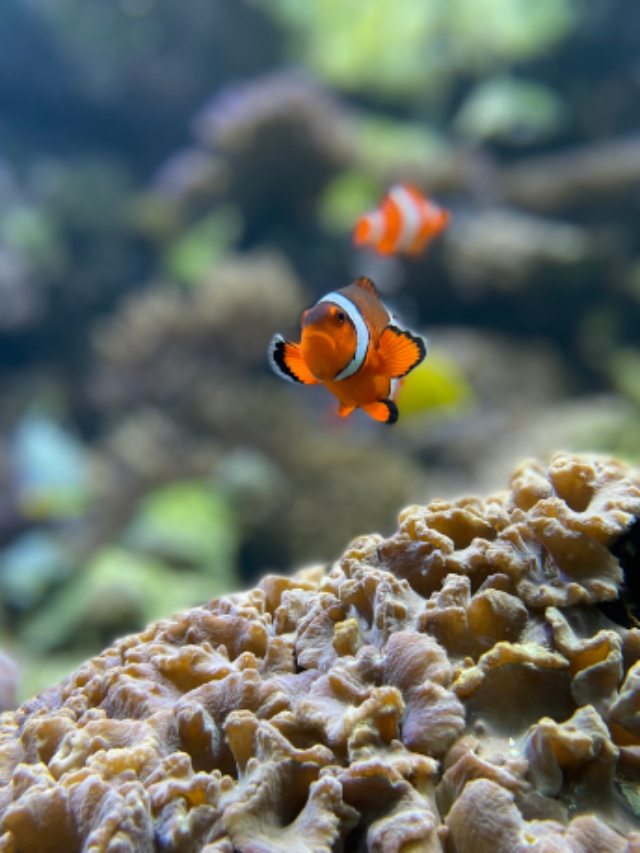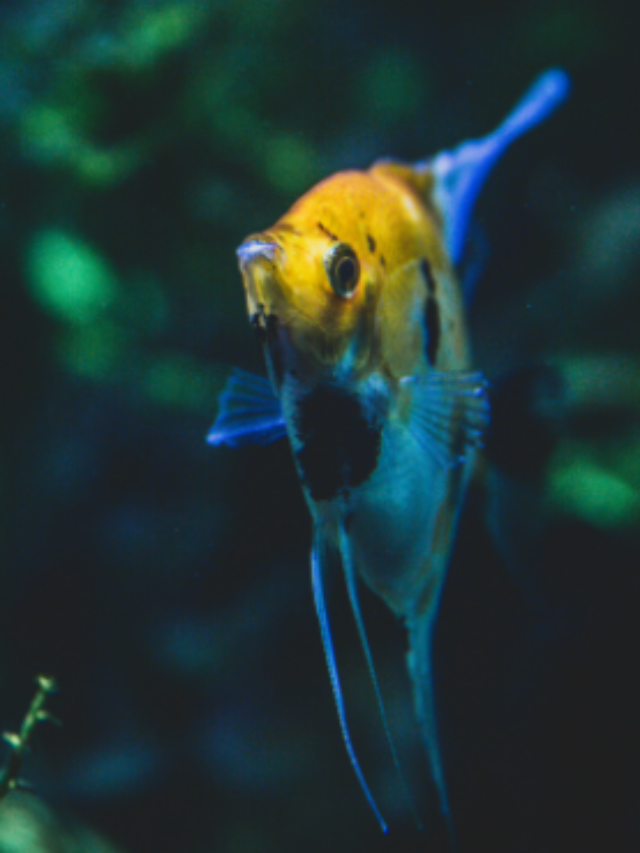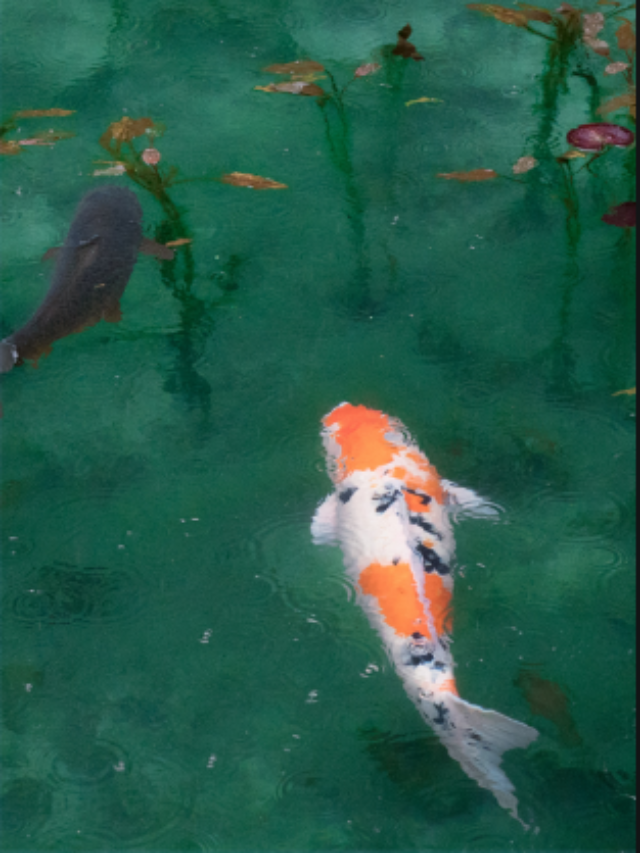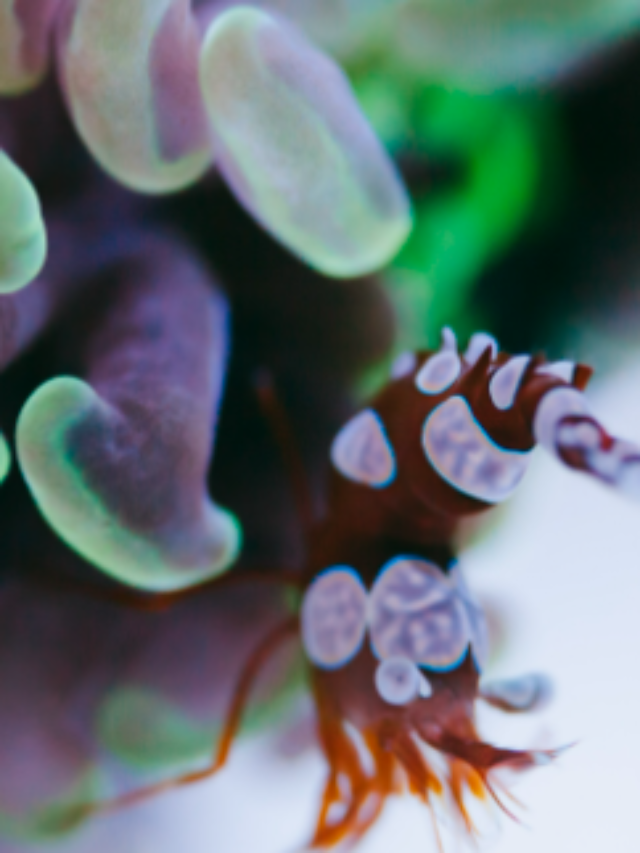How to Grow Koi Fast up to 2-2.5 Feet: 5 Steps Guides
Check Our Quick Stories
Koi fish is largely popular among pond enthusiasts. They prefer to keep this fish as a pet. However, some beginners may not know how to grow koi fish fast up to 3-4 feet long which is quite easy.
To grow koi up to 2-2.5 ft in a pond, fishkeepers must choose the right breed initially. Jumbo koi are such a breed that grows huge if they get proper nutrition, space & good water. However, make sure to build a wide pond & not overstock it to grow koi fish on an average of 17cm/month for the first couple of years.
This two-line answer may not have satisfied you. This is just an overview of this topic. However, now we’ll discuss it comprehensively. So without wasting time let’s dive deep into the topic.
How do you grow koi fast up to 2-2.5 feet?
The growth of the koi depends on lots of factors. Among those factors some are internal and some are external. So you have to know these from before starting to keep koi fish in your outside pond. Let’s start.
-
Choose the right koi fish type
You must know that any type of koi fish does not grow up to 2 or 2.5 feet long. This firstly depends on its type. Though some researchers are experimenting to grow high-quality big koi fish by cross-breeding, still it is not possible at the current time to grow any koi fish at this size.
In general, we can divide koi fish into three categories. These are Domestic koi, Japanese koi, and Jumbo koi. Local U.S. farmers grow domestic koi fish. These koi fish do not grow up to 12-15 inches (≤1.5 feet). Imported or Japanese koi grow up to 2 feet long and jumbo koi grow up to 3 feet long. There is another type of koi that is called long fin koi. This grows up to 2 feet long. However, it seems like a long fish just because of its long fairy fins.
According to this, jumbo koi fish is the right choice for you. These fish have such genetics that helps to grow up to this size. However, the quality of the fish is also checked along with the size.
-
Koi pond must have adequate space
After choosing the right breed, the next thing you have to do is to build a pond of the right size.
Now, what the meaning here is of the right size of a koi pond. Despite choosing jumbo koi or any other koi, if you don’t provide adequate space to them then they may not grow up to their potential size and weight.
A minimum of 1000-gallon of water is sufficient for 4-5 average-sized koi. Now, 6 ft length, 5 ft breath & 5 ft depth (6’x5’x5′) space contains 1125-gallon of water (1 CFT= 7.5 US. Gallon). It is the minimum size for a koi pond. Pond’s depth can be ≤5 ft, but additional depth helps koi to hide from predators.
However, there are no hard and fast rules about the koi pond size. It can be more or less. We recommend building a long koi pond if you have space. This long pond provides adequate space to play koi fish. This factor plays a significant role in koi’s growth. Besides this, generally, koi are fast and very active. So a lengthy pond helps them to be safe from predators.
Ideally, 15-20 feet is a good length for a koi pond with 10 feet in width. However, for some people, it may appear very big due to not having enough space for it. For them, our initial recommendation of the koi pond’s size will work well.
If you have children then you should design koi ponds well. This future planning may help you to save lives. Here we are presenting a concept of koi pond’s design that you can copy for building your own koi pond.
Read More:- Pond Mates of Koi: A List of 9 Most Suitable Fish
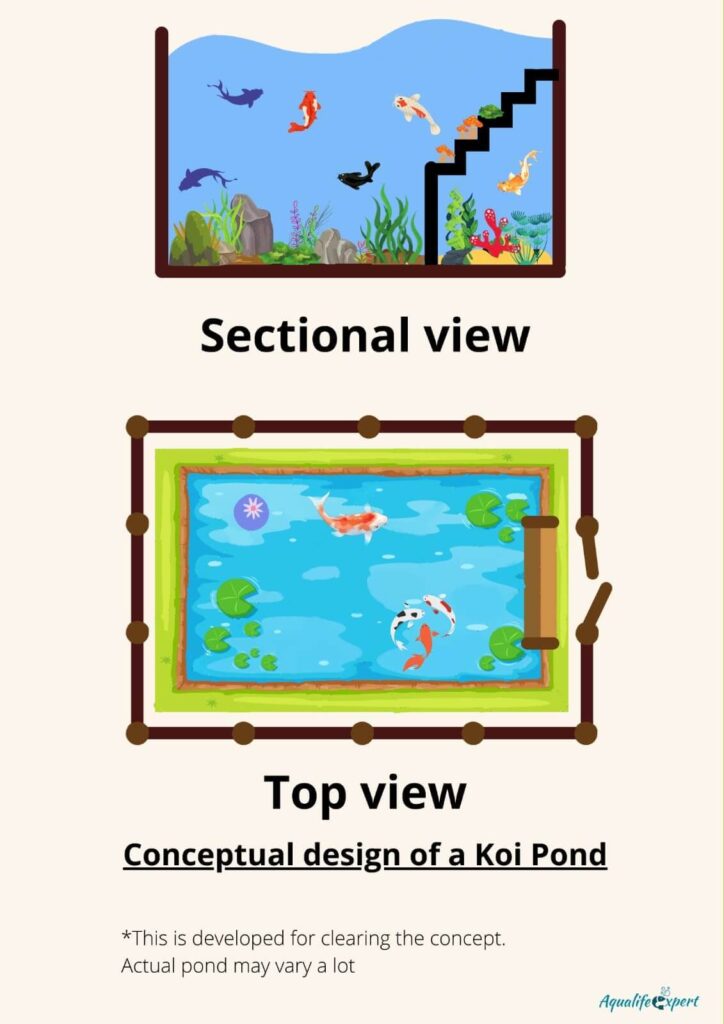
-
Koi need a proper diet chart to grow faster
This is very obvious providing quality food to koi for its huge growth. Without quality food, other factors may not work. However, here we are not talking about normal food for it. A proper diet chart is required for your koi if you want to grow it up to 2-2.5 feet.
You must know that koi are cold-blooded fish. It means their body temperature varies according to the water temperature. In winter, due to low temperature, its metabolic demands remain very low. So, generally, they do not eat during this time due to a lack of appetite. Despite having this external condition, you must know that a proper digestion system is the most required to grow koi fish fast.
Koi prefers to live in warmer conditions. So you have to arrange a pond heater within your budget. Having a heater is mandatory to grow koi faster. Here we are recommending a heater from a very popular brand named ‘Tetra Pond”. You can check the price of it on Amazon.
To grow koi fast you need a combination of protein, amino acids, fiber, and fats. So you must check the percentage of these in your koi food. This may seem confusing to beginners like you. However, we are trying to simplify these things. Hundreds of researchers and breeders have researched and analyzed this and reached a conclusion. Let’s have a look
Read More:- 10 varieties of Koi Fish: Origin, Description & Pictures

Now, the main question is how to provide this right combination to your koi fish through quality foods. For this, we have created a simple Infographic for you to understand better.
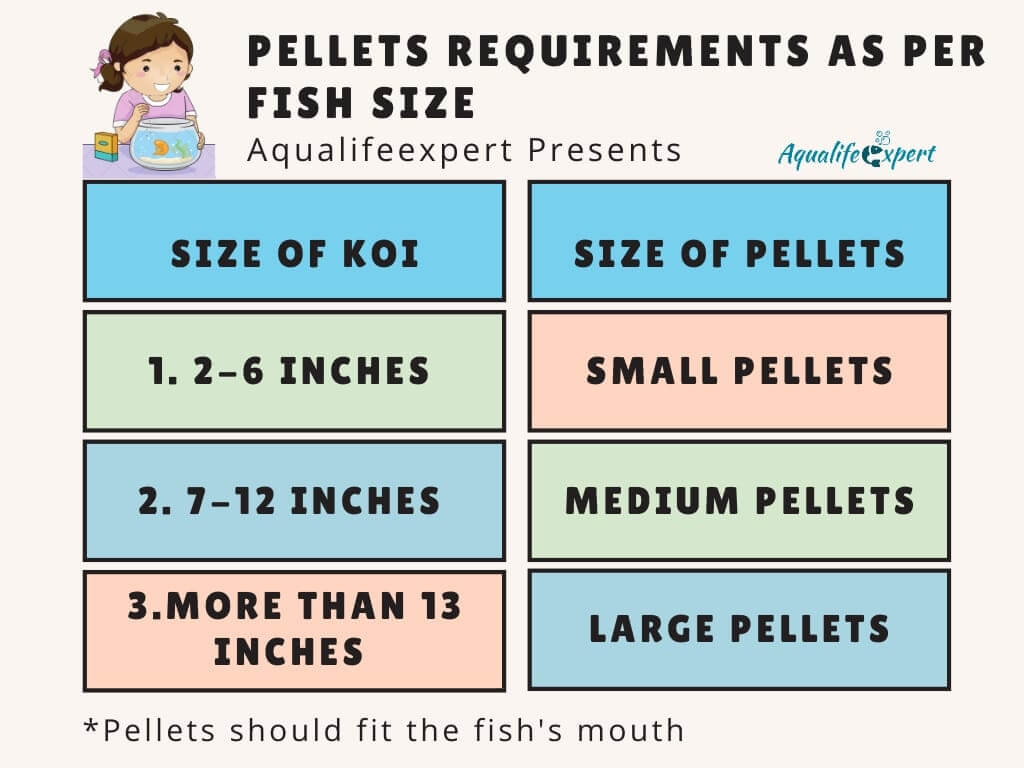
This is developed through a koi food ratio. This ratio implies that koi fish should gain adequate weight by eating adequate food within a certain time period.
For example, if a koi eats 1.5 pounds of food per month then it should gain 1 pound of weight along with 1 inch length increment per month. This is a general thumb rule (exceptions are always there). This growth rate fluctuates depending upon water temperature.
Feeding your koi too much is not good for your pond. Providing food 3-4 times per day is good for koi fish. Otherwise, excessive food may foul the water. However, you should check whether your fish is eating all foods within 15 mins or not. If this time is more than that means koi don’t want to eat food anymore at this time. This is another thumb rule of feeding koi well.
Read More:-How Long Does A Fish Live Without Food? Infographic Presentation
-
Having good quality water is the must
Some aquarists only focus on koi food to grow their koi fish at the highest level. If you are one of them then you should know that water quality is also a significant parameter to grow koi up to 2-2.5 feet long.
Here the water quality is the combination of the pH level, gH level, oxygen level, alkalinity level, acidity level, ammonia level, and so on. All of these must be at a certain level in a koi pond. Temperature plays an important role here too.
We have discussed that koi prefer to live in warm water. Now you must know that warm water does not contain lots of oxygen and due to low oxygen level koi consume more oxygen per minute. This rate increases along with the activities of the koi fish.
Furthermore, if koi fish are very active, it means they are enjoying the habitat which you have built for them. Not only that, but they will eat more and grow at a faster rate per month. Their muscles will grow faster too. So right water quality is the most important parameter to grow koi fast in an outside pond.
For this reason, you should follow an expert guide to maintain ‘A’ grade water quality for your koi pond. We are providing you a chart of various water parameters which you need to follow. This is the ultimate guide for various types of koi ponds.
Read More: – 15 Best Plants For Koi Ponds: With Infographics & Charts

Read more:- How to Get Crystal Clear Koi Pond Water Right Away
-
Prevent koi overstocking to grow at a faster rate
After checking the water quality, you must check whether your pond is overstocked by koi or not. This is another essential factor that you need to consider to get some healthy and happy koi for a long time.
Lots of aqua enthusiasts show lots of koi are swimming in their pond or anywhere else. This creates a wrong image in front of newbies. In a pond, there should not be excessive koi fish no matter what the causes are.
Now, you must know that overstocking of koi fish depends on various factors. One of the main factors is the pond surface area. We have discussed that having a wide/long pond is better than anything else. It is because a wide/long pond has a bigger surface area. It helps to keep more koi in a pond.
For example, if you have two ponds containing the same water volume. One is deep but less wide and another is less deep but wider. In this case, you can keep more koi fish in the second pond obviously.
Read More:- Secrets of Keeping Koi & Goldfish Together: Is It Even Worthy
As a general thumb rule, 5-6 average-sized koi can be kept in 1000-gallon of water. Now, it can be less or more depending on the other pond mates, types, and food availability, and ages. After 3-4 years, when those average-sized koi will be mature and adult enough then they can overstock that pond. So you must be clear about your long-term goal too.
However, it may seem confusing due to a lack of knowledge. Here we are trying to simplify the whole concept for you.
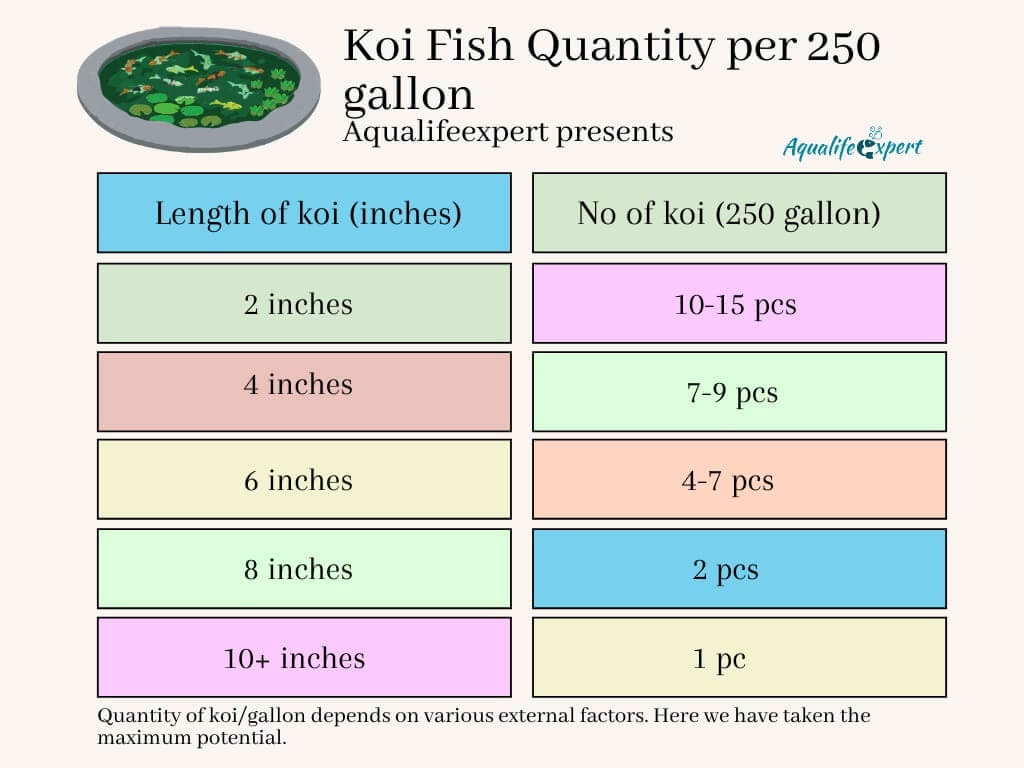
You must know if you overstocked koi in the pond then competitive stress may increase. Due to this stress, the growth rate becomes slower than average and the fish may start to become ill frequently.
Read more:- Is Koi Pond Not Clear? 7 Most Common Reasons of it
Final Thoughts
Raising koi is not so tough for those who have a little bit of experience in fishkeeping. However, it does not mean beginners can’t raise koi fish. For those beginners here we have discussed this topic comprehensively.
Here we discussed 5 simple steps to grow koi fast up to 2-2.5 feet in an outside pond. All those steps are equally significant. For example, you can’t expect a big koi if you have chosen the wrong genetics of koi for your pond. So read our step-by-step guide to get an idea of it.
So best of luck & happy fish keeping 

